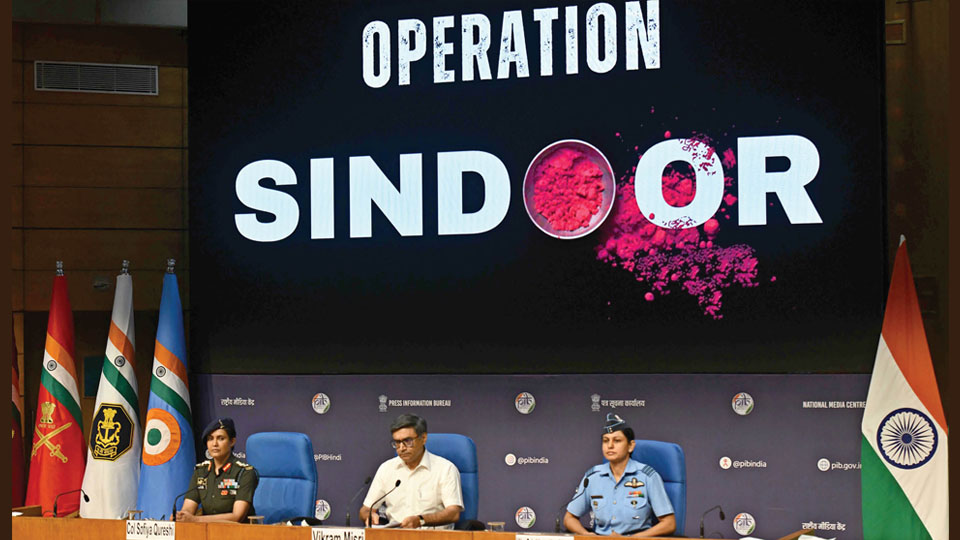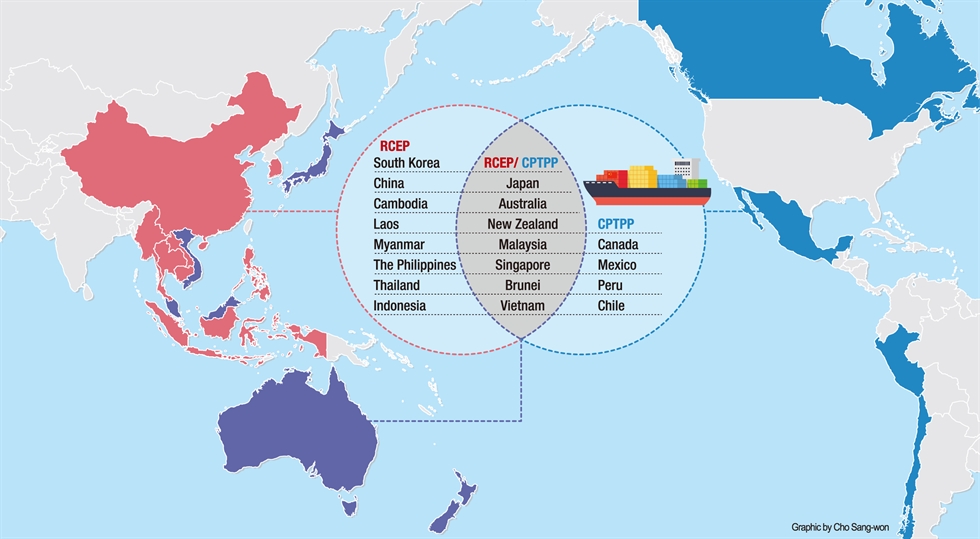India presents itself as a global leader and representative of the Global South, yet this contradicts its troubled relationships with immediate neighbors. Western powers overlook that because they view India as a counterbalance to China rather than scrutinizing its regional conduct and democratic backsliding.

Colonel Sophia Qureshi and Wing Commander Vyomika Singh accompanied the Indian Foreign Secretary Vikram Misri representing the Indian Army and the Indian Air Force at the official media briefing of Operation Sindoor in New Delhi on May 5, 2025.
India has mastered the art of exporting an international image that diverges harshly from its regional standing. Celebrated in Western capitals as a democratic counterweight to China and readily accepted as a leader for the Global South, it projects global confidence and ambition. Yet within its immediate vicinity, the picture is less flattering—marked by unresolved tensions, mutual suspicion, and continual failures to build regional integration.
India’s global projection rests on shaky regional ground. While Delhi seeks recognition as a major power and voice of the developing nations, it cannot substantiate that role through cohesive ties in South Asia. Prime Minister Modi’s globe-shaping vision—framed as a quest to “dominate the world”—contrasts with fractured relations in its immediate community.
Alone in the Neighborhood
The ambition is loud, the regional anchoring faint. Relations with Pakistan remain hostile, shaped by decades of conflict and distrust. Ties with Bangladesh, though occasionally cooperative, are strained by disputes over migration, water, and border disputes. Engagement with Sri Lanka is complicated by historical grievances and economic friction, while diplomacy with Nepal and Bhutan reflects a hierarchical stance that faces growing resistance.

Despite this, Delhi is deeply embedded in the architecture of global multilateralism—G20, Quad, IPEF, SCO, BRICS+, I2U2, IBSA, SAARC, MSP, and RIC. This makes India’s absence from core Asian trade frameworks like RCEP, CPTPP, and the trade pillar of IPEF all the more revealing. The gap reflects not a lack of capacity, but a dissonance—pursuing global stature without regional grounding.
The imbalance is clearest when security overrides diplomacy. In May 2025, “Operation Sindoor” targeted what Delhi called terrorist infrastructure in Pakistan-controlled Kashmir, following an attack in Kashmir under Indian control that killed 26 civilians and was blamed on Pakistan-supported groups. The BJP government presented the airstrike as “measured,” “non-escalatory,” and a calibrated act of defense—“Justice is served.” However, it resulted in civilian casualties—including children—, damaged mosques, and widespread blackouts. It laid bare the volatility of deterrence in a nuclear-armed area, and the limits of regional leadership shaped through force rather than compromise.

Indian Army post on X. Link to source: https://x.com/adgpi/status/1919850036596199492
The core issue in retaliating to a terrorist attack is that the response determines a country’s geopolitical standpoint. Launching airstrikes on a sovereign state, on an unproven claim that it sponsors the perpetrators, signals less a pursuit of justice, given the potential for escalation, than a move for domestic approval. Far from demonstrating leadership, such actions risk to erode credibility regionally and globally.
The incursion also reveals two inconsistencies at the heart of India’s positioning. First, in the region, security-driven unilateralism undermines the very stability it claims to protect. Second, at home, performative gestures blur deeper divides. Naming the strike Sindoor—a reference to the vermilion worn by married Hindu women and framed by the government as a tribute to female empowerment—shows how military action is dressed in feminist symbolism to construct a narrative detached from measurable realities.
This framing is striking for both its novelty and what it conceals. The gap between projected appearance and reality is particularly stark on gender equality: India ranks 129th out of 146 in the Global Gender Gap Report. 2024 UN Women data shows one of the world’s highest rates of gender-based abuse, with 30% of women reporting physical or sexual violence from an intimate partner. Once more, the dissonance echoes a broader pattern: a global democratic image at odds with domestic behavior, where storytelling serves political purpose rather than reflecting grounded facts.
Between Beijing and Islamabad
India’s most consequential challenge lies in its uneasy relationship with China—often referred to in official circles as “a particular geography.” At the heart of this tension is a heavily militarized and contested Himalayan border, stretching between 2,000 and 3,500 kilometers. The Line of Actual Control encapsulates a strategic tension: asserting territorial claims while preserving functional ties with its largest economic partner.
Now, Sindoor risks unraveling fragile diplomatic progress after years of stalemate. The October 2024 meeting between Xi Jinping and Narendra Modi at the BRICS summit in Russia—their first in five years—followed by the resumption of direct flights in January 2025, had hinted at a cautious thaw. These steps reflected a shared pragmatism: managed tension was preferable to open hostility. Both sides had begun advancing a model of ‘parallel interests diplomacy,’ in which rivalry and economic interdependence coexist and reinforce each other.
However, in the wake of Sindoor, Pakistan’s retaliation will likely affect the near-term trajectory of Sino-Indian relations. Delhi seeks to punish terrorists without tipping into open escalation, but the space for calibrated action is just too thin. Beijing’s alignment with Islamabad sharpens existing fault lines; further Indian pressure risks prompting deeper Chinese support for Pakistan, threatening to undo the fragile progress of recent months.
This delicate triangle plays out within a wider regional contest outlined by China’s Belt and Road Initiative, which has expanded Beijing’s influence across South Asia. BRI has deepened China’s ties with Pakistan, Sri Lanka, and Bangladesh—exactly the neighbors where India faces friction. The Maritime Silk Road reinforces this approach, shifting the Indian Ocean’s balance through control of key ports and trade routes. Together, these moves highlight the shortcomings of Delhi’s “Neighbourhood First” policy, which has failed to offer viable alternatives to Beijing’s economic statecraft.
Indian Human Rights, Western Silence
Western powers have largely accepted India’s self-fashioned role with minimal scrutiny. The European Union, typically outspoken on democracy and human rights, has downplayed these concerns in its dealings with Delhi. In late February 2025, 21 EU commissioners visited India—and not one uttered a word about the rights of half its population: women. The moral posturing routinely deployed in Beijing vanished the moment they landed in Delhi. On gender rights, they saw no evil, spoke no “systemic rival”; for them, the data might as well not exist.
This reflects a cold strategic calculus that lays bare the underlying reality: India is valued less for its democratic credentials than for its utility against China. A fact that should alarm Delhi—the West treats India as a geopolitical tool, not a responsible stakeholder.
As a result, this accommodation carries costs. As India gains international validation without critical oversight, domestic democratic pressures lack external guardrails. The shift toward majoritarian rule under weakened institutional checks continues unchallenged, while regional tensions are ignored by the very partners that endorse India’s global ascent.
Domestically, media and public-diplomacy ecosystems are strictly aligned with government messaging, amplifying nationalism while muting contradictions. The story of India’s rise holds, therefore, strong internal appeal. The Modi administration uses nationalism as historical destiny to consolidate unity and marginalize dissent. The effects are concrete: judicial independence erodes, border tensions stoke Hindu-nationalist fervor, and policy unpredictability unsettles investors.
Rhetoric and Reality
Globally, India is defined less by what it is than by what others need it to be in the U.S.-China rivalry. In reality, it is not a regional leader but a regional loner—armed, assertive, and unaccountable. A nuclear power with fading checks and no regional esteem can hardly claim to uphold order.
Policymakers and observers must cut through India’s curated global image. Global ambition entails alignment with regional responsibility. Western democracies would better serve their interests by engaging India as a democratic partner with obligations—not just a counterweight to China.
India has the means to foster more stable regional ties, but that potential remains unrealized. Security logic dominates its foreign posture, while international partners prioritize alignment over scrutiny. A recalibrated approach would recognize India’s security concerns while demanding deeper regional engagement and institutional trust-building. It would assess India’s global role not by its utility in great power rivalry, but by its ability to turn a fractured region into a cooperative one.
This shift would benefit not only neighboring states but India itself, laying the groundwork for durable influence. Without it, the gap between global projection and regional conduct will only deepen—undermining both India’s ambitions and South Asia’s stability. The good news: transformation is possible. Others have done it. India still can.
